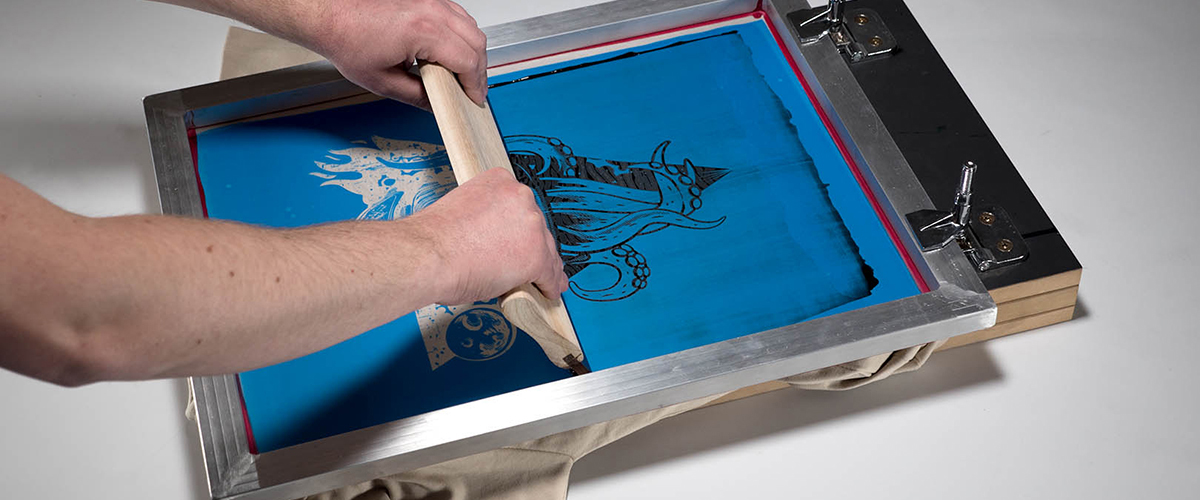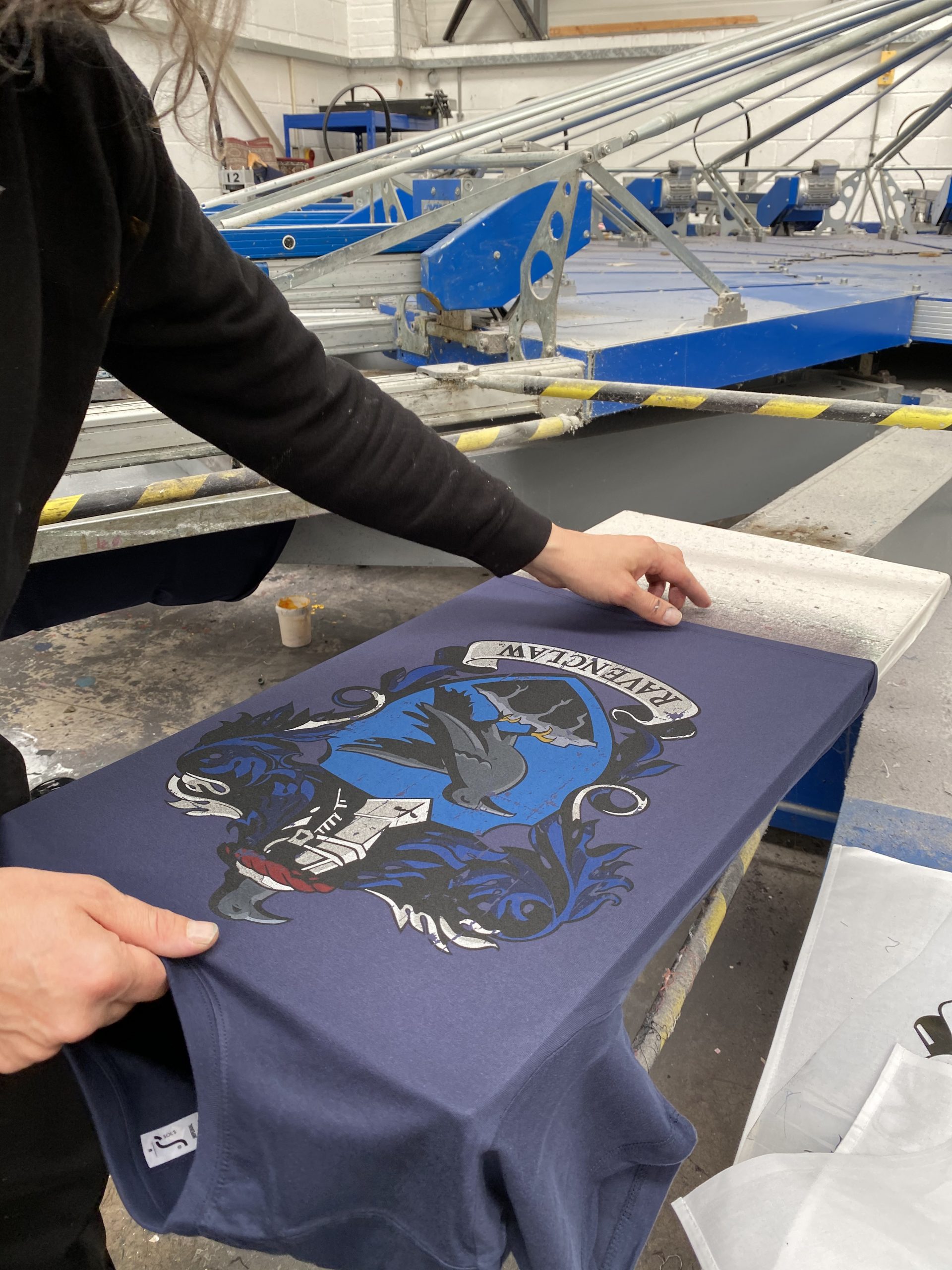ChatGPT said: How 10:9 Design Screen Printing can elevate your brand
Discover the Various Kinds Of Screen Printing Techniques for Your Next Task
Screen printing offers a diverse variety of strategies that can enhance any type of innovative task. From typical methods like serigraphy to contemporary innovations such as direct-to-garment printing, each technique has its one-of-a-kind benefits. Specialty alternatives, consisting of metallic and environmentally friendly inks, present much more opportunities. Comprehending these techniques can considerably affect the final outcome. Nonetheless, the obstacle depends on selecting one of the most appropriate approach for particular demands and preferred impacts. What elements should one consider?

The Basics of Screen Printing
Although screen printing may appear complicated, it is fundamentally a straightforward procedure that entails transferring ink through a mesh screen onto numerous surfaces. The strategy begins with the development of a stencil, which defines the style to be published. This stencil is connected to a mesh screen, normally made from polyester or nylon. As soon as the pattern is in place, ink is used to the screen and pressed through the mesh making use of a squeegee, leading to the preferred pattern being published on the underlying product.
Screen printing can be done on a variety of substratums, including textile, paper, and plastic, making it a flexible option for various tasks. The process permits intricate layouts and vibrant colors, making it preferred in markets such as advertising and marketing, style, and art. Comprehending these basics equips people with the fundamental understanding required to explore even more innovative methods in screen printing.
Standard Screen Printing Techniques
Conventional screen printing techniques have actually been used for centuries, protecting the craftsmanship and virtuosity of this approach. This technique utilizes a mesh screen to move ink onto a substratum, such as fabric or paper, allowing for resilient and dynamic designs. The procedure begins with creating a pattern, which blocks particular areas of the screen to control where the ink will certainly be used.
One prominent strategy is serigraphy, usually used for creative prints and minimal editions. One more is using water-based inks, which are eco-friendly and give a soft feel on fabrics - 10:9 Design contact. In addition, standard techniques can include hands-on printing, where craftsmens use ink with a squeegee, ensuring precision and interest to information
These techniques continue to be valued in the market for their responsive quality and the one-of-a-kind structures they generate, interesting both consumers and makers who appreciate the heritage of screen printing.
Digital Screen Printing Innovations
As the demand for faster production and customization in the printing industry has risen, digital screen printing innovations have actually become a game-changer. This innovation blends conventional screen printing techniques with digital procedures, enabling fast prototyping and complex styles that were previously difficult to attain. One considerable improvement is the introduction of direct-to-garment (DTG) printing, which helps with premium, full-color prints on various fabrics without the demand for screens. Additionally, advancements in ink formulations have actually caused green alternatives that preserve lively shades while lessening environmental influence. Making use of automated systems even more streamlines manufacturing, decreasing labor costs and boosting accuracy. These developments not only satisfy little set orders and tailored layouts however also permit for quicker turn-around times, making them ideal for companies concentrated on conference consumer needs in a fast-paced market. Digital screen printing, consequently, stands for an important development in the domain name of printing techniques.
Specialized Screen Printing Methods
Checking out specialized screen printing techniques exposes a varied array of methods that press the limits of creative thinking and capability in the printing industry. Amongst these, glow-in-the-dark inks provide a special aesthetic effect, making styles come active in low-light conditions. Metallic inks, understood for their shimmering surface, add a touch of high-end to published products. Another innovative technique is discharge printing, which eliminates color from the textile as opposed to adding ink, leading to a soft, classic feel. High-density printing produces an elevated appearance externally, improving tactile involvement. In addition, water-based inks are acquiring popularity for their vivid colors and reduced environmental influence. Each of these specialty methods accommodates details style demands, making it possible for brands and musicians to develop standout products that reverberate with their target markets. By leveraging these approaches, services can elevate their screen printing tasks to new elevations, guaranteeing memorable impressions.
Eco-Friendly Screen Printing Options
Environment-friendly screen printing alternatives are gaining traction as the market changes in the direction of sustainability. Lasting ink options and making use of eco-friendly products are essential elements in decreasing the ecological effect of the printing process. By adopting these methods, screen printers can contribute to a more sustainable future while preserving top notch results.
Sustainable Ink Selections

Biodegradable Materials Usage
As the screen printing industry advances, the incorporation of eco-friendly materials is becoming increasingly important for ecologically aware techniques. Developers and makers are currently checking out inks and substratums made from all-natural, renewable energies that decay much more efficiently than conventional equivalents. These eco-friendly alternatives lower plastic waste and decrease ecological effect, straightening with the expanding need for lasting items.
Common examples include water-based inks and organic cotton fabrics, both of which reduce harmful chemicals and promote eco-friendliness. Brands that embrace these materials usually boost their market appeal, attracting consumers who prioritize sustainability. As awareness of environmental issues continues to increase, the change in the direction of biodegradable materials in screen printing is most likely to gain momentum, promoting a greener industry criterion.
Picking the Right Strategy for Your Project
How can one determine one of the most ideal screen printing method for a details job? The decision depends upon a number of aspects, including the you could try here product to be published on, the complexity of the design, and the desired production quantity - 10:9 Design near me. As an example, direct-to-garment printing is perfect for detailed layouts with numerous colors, while typical screen printing stands out for bigger runs of simpler graphics
Additionally, factor to consider of the end-use of the printed thing is necessary. For outdoor applications, strategies that provide durability and weather condition resistance, such as plastisol ink, might be chosen. Alternatively, environmentally-conscious projects might take advantage of eco-friendly materials or water-based inks.
Eventually, understanding the job's one-of-a-kind requirements enables for an informed choice, making sure both aesthetic appeal and practical longevity. By examining design complexity, product compatibility, and production scale, one can successfully pick one of the most suitable screen printing click site strategy to meet their job's objectives.
Regularly Asked Questions
What Is the Background of Screen Printing?
Screen printing came from old China around 1000 AD, advancing with Japan and Europe. By the 20th century, it came to be prominent in business art and fashion, transforming exactly how styles were generated and dispersed globally.

Exactly how Do I Prepare Art Work for Screen Printing?
To prepare artwork for screen printing, one have to guarantee high resolution, make use of an appropriate shade mode, create separate layers for every shade, and convert text to lays out, guaranteeing compatibility with the printing procedure and preferred outcome.
What Materials Are Best for Screen Printing?
The best materials for screen printing consist of top notch inks, resilient displays, and ideal substrates like cotton, polyester, or blends. In addition, using proper solution and mops can boost the printing procedure and results.
Can I Screen Print at Home?
Yes, screen printing at home is possible. With the best materials, configuration, and methods, people can produce high-grade prints. However, careful factor to consider of workspace and equipment is important for successful results.

What Prevail Errors in Screen Printing?
Usual blunders in screen printing include improper exposure times, insufficient ink uniformity, misalignment of screens, insufficient cleaning of materials, and disregarding to test prints. These errors can jeopardize the top quality and precision of the final product.
Screen printing might seem complex, it is essentially an uncomplicated procedure that entails moving ink via a mesh screen onto numerous surface areas. As the need for faster manufacturing and modification in the printing sector has actually risen, electronic screen printing technologies have actually arised as a game-changer. Checking out specialized screen printing techniques exposes a varied variety of methods that press the borders of creative thinking and capability in the printing market. The finest materials for screen printing consist of premium inks, sturdy displays, and suitable substrates like cotton, polyester, or blends (10:9 Design reviews). Typical errors in screen printing include inappropriate direct exposure times, inadequate ink uniformity, imbalance of screens, not enough cleansing visit the website of materials, and neglecting to examine prints